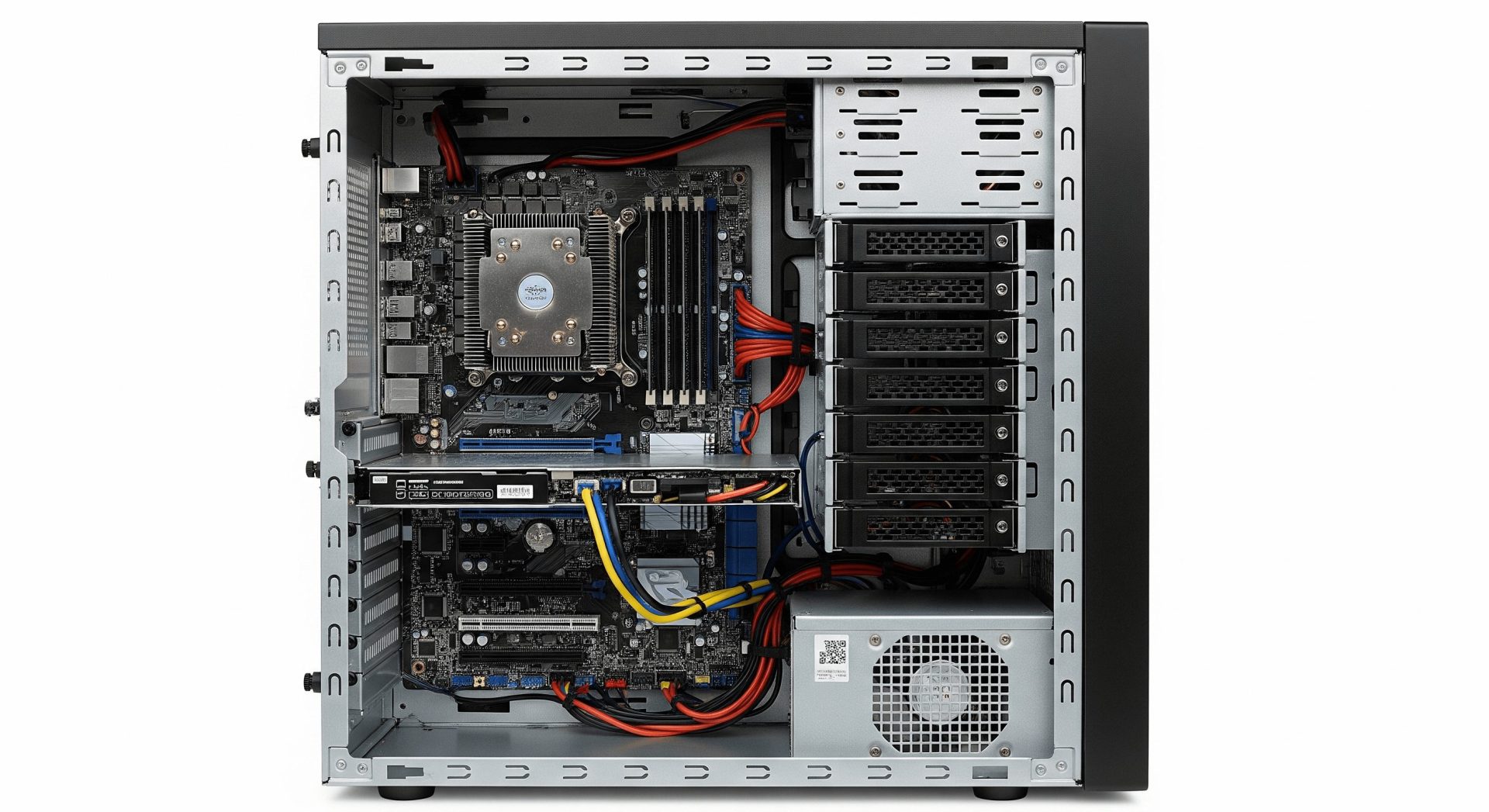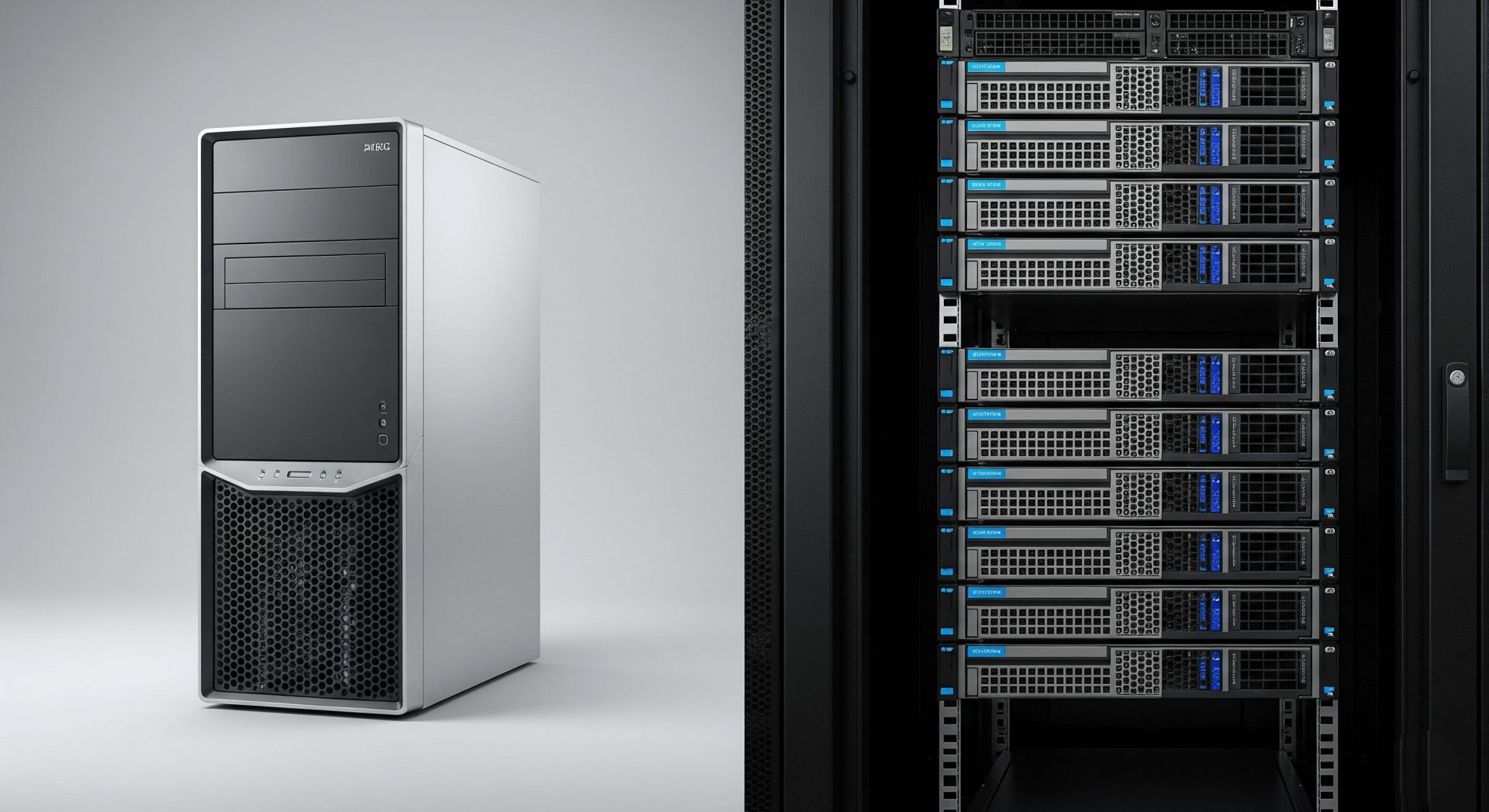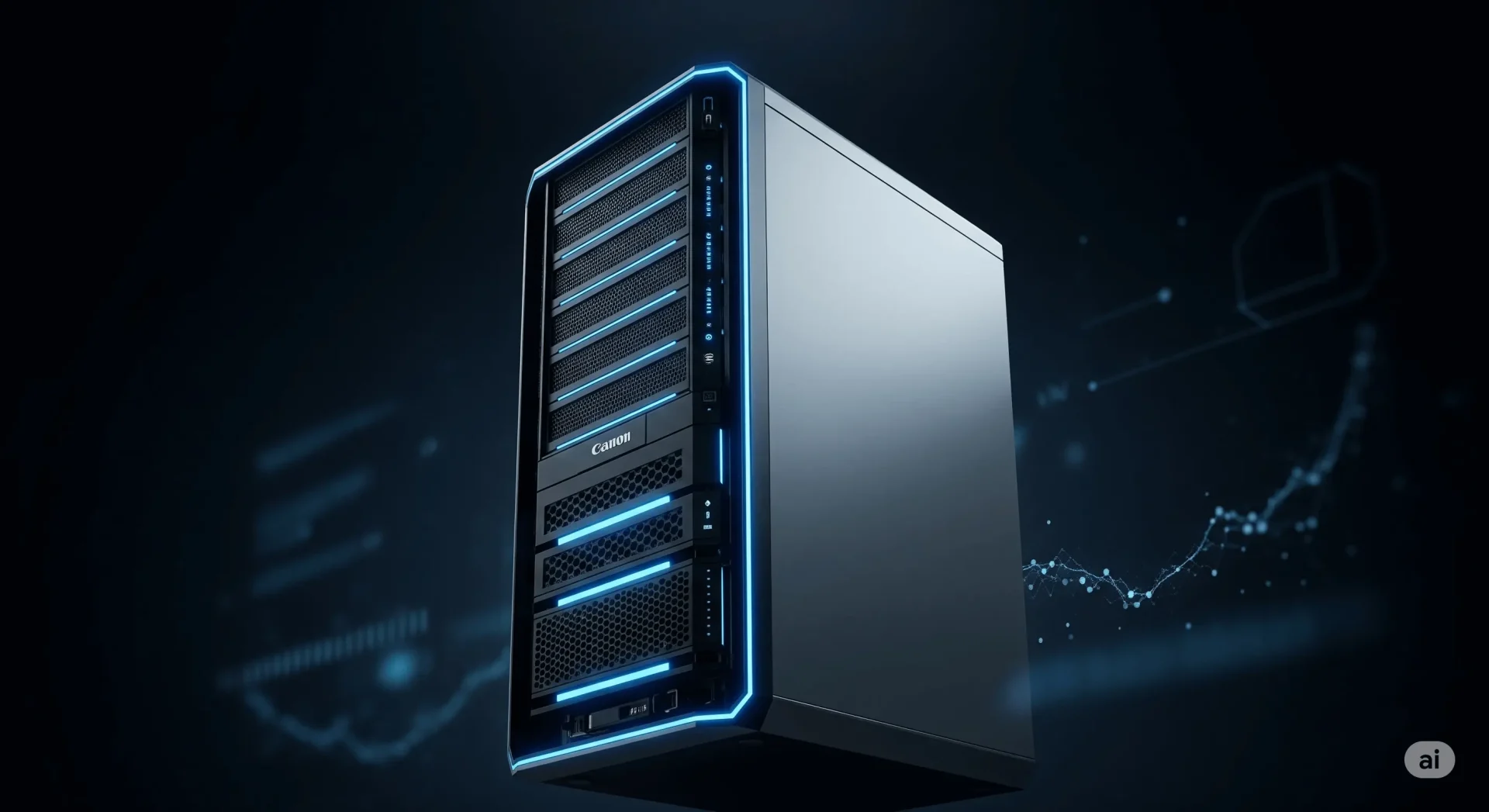What Is a Tower Server? A Complete Guide for Your Business
When businesses outgrow their standard desktop computers, they need a centralized, more powerful solution to manage resources, data, and applications. This is where servers come in, and one of the most accessible and popular form factors is the tower server.
A tower server looks strikingly similar if you’ve ever seen a high-end desktop PC. It’s a standalone server built into an upright, cabinet-style chassis. But don’t let its familiar appearance fool you; what’s inside is engineered for the reliability, performance, and security that a 24/7 business environment demands.
This guide will explain everything you need about tower servers, their components, benefits, drawbacks, and who they’re best for.

Key Components of a Tower Server
While they resemble a desktop, tower servers use server-grade components designed for continuous operation and heavier workloads.
- Chassis (Case): The physical housing is larger than a standard desktop to accommodate more components and facilitate better airflow.
- Motherboard: A server motherboard often has sockets for multiple CPUs, more RAM slots, and more robust connectivity options than a desktop version.
- CPU (Processor): They use powerful processors, like Intel’s Xeon or AMD’s EPYC series, which are designed for multitasking and server-specific tasks. It’s common for them to support two or more physical CPUs.
- RAM (Memory): Tower servers use ECC (Error-Correcting Code) RAM, which is crucial for preventing data corruption and system crashes—a must-have for any business-critical application.
- Storage: They typically have multiple drive bays for hard drives (HDDs) or solid-state drives (SSDs), often configured in a RAID array (Redundant Array of Independent Disks) for data protection and speed.
- Power Supply Unit (PSU): Many tower servers have redundant power supplies to ensure uptime. If one fails, the other seamlessly takes over, keeping the server online.
Advantages of a Tower Server
Tower servers are the perfect starting point for many organizations, especially small to medium-sized businesses (SMBs).
1. Cost-Effective
The initial investment for a tower server is generally lower than for its rack or blade counterparts. You don’t need to purchase an expensive server rack or dedicated cooling infrastructure to get started.
2. Excellent Cooling
Due to its large chassis and lower component density, a tower server can cool itself efficiently with standard fans. This reduces the risk of overheating without requiring a specialized, climate-controlled server room.
3. Simple Scalability and Upgrades
Need more storage or RAM? The spacious case of a tower server makes upgrades easy. You can open the side panel and add or replace components without much hassle, much like a desktop PC.
4. Low Noise Levels
Tower servers are significantly quieter than rack servers, which are packed with high-speed fans and designed for noisy data centers. This makes them ideal for placement in an office environment without a dedicated server room.
Disadvantages of a Tower Server
Tower servers aren’t the right fit for every scenario.
1. Space and Cabling
A single tower server is compact, but quickly becomes bulky if you need multiple servers. Each server is a separate, large box with keyboard, monitor, mouse, and network cables. Managing five tower servers can create a messy “cable spaghetti” and take up significant floor space.
2. Limited Scalability for Large Operations
While a single tower is easy to upgrade, this model doesn’t scale well for large-scale operations. An organization that needs dozens of servers will find managing individual towers impractical compared to the high density offered by rack or blade servers.
Tower Server vs. Rack Server: What’s the Difference?

The primary alternative to a tower server is a rack server.
A tower server is an excellent choice for:
- Small and Medium-Sized Businesses (SMBs): Perfect as a first server for handling file sharing, email, printing, or hosting internal applications.
- Remote or Branch Offices are ideal for locations that need local computing power but don’t have a data center.
- Specific Roles: This role is excellent for dedicated tasks like managing a network’s security, handling a point-of-sale (POS) system, or running a small web server.
-
Read more: What is Nginx and what are its uses?
Conclusion
The tower server offers a powerful, affordable, and flexible solution for businesses taking their first steps beyond standard desktop PCs. It provides the server-grade reliability and performance needed to run critical business applications without requiring a full-scale data center’s heavy investment and dedicated infrastructure. While it may not be the solution for large enterprises, it remains the undisputed workhorse for millions of small businesses worldwide.


